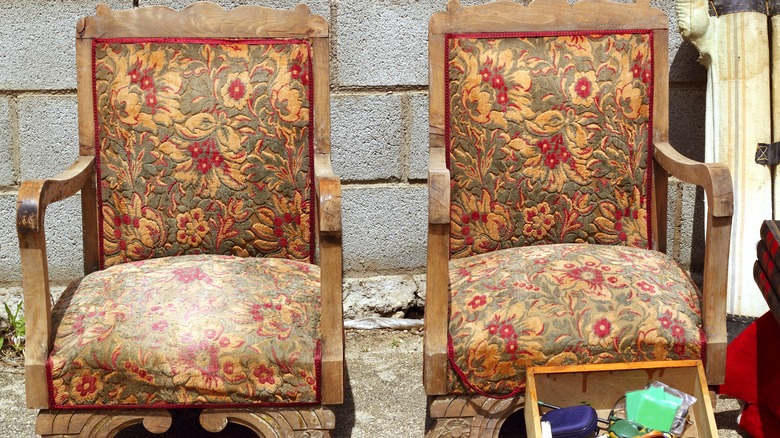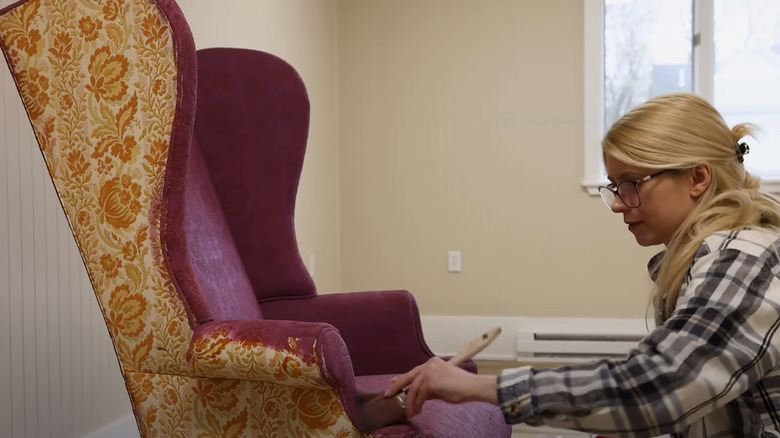Use This Laundry Room Staple To Paint Fabric Furniture Like A Pro
Picture yourself begrudgingly eyeing that weathered armchair in your lounge. You balk at the notion of reupholstering; it's expensive, time-consuming, and let's face it, you've grown attached to the old thing. Welcome to the world of painting upholstery. Not only is this furniture makeover more straightforward and cost-saving than reupholstering, but it can be far easier to maintain. Imagine, for example, the convenience of wiping off a coffee spill from your vibrant repainted settee with a damp cloth instead of toiling away at difficult-to-wash furniture fabric. But did you know a laundry room staple could be the secret to perfect upholstery painting? The hero is none other than fabric softener.
Yes, you didn't mishear that. Fabric softener performs admirably as a fabric medium, a sort of liaison, if you will, between your paint and fabric. It fosters a smooth, even application of acrylic or fabric paints on furniture upholstery. It also paves the pathway to the kind of durability every DIY enthusiast craves, guaranteeing a color vibrancy that endures heavy use and numerous washes. Not to mention that it slows down paint drying, giving you plenty of time to correct those "oops" moments. However, not just any fabric will pleasantly dance to the tunes of paint and softener. Smooth cotton or poly-blend fabrics tend to offer the best results. Conversely, upholstery featuring robust textures such as velvety or thick woven elements may resist this new partnership, often making liquid dye or slipcovers a more feasible option.
Painting furniture upholstery with the help of a fabric softener
Begin this furniture upgrade by gathering your supplies, including high-grade acrylic paint, fabric softener, water, a plastic container, high-grit sandpaper, a spray bottle, and a paintbrush or sprayer. Next, cover your workspace with a drop cloth or newspaper to shield it from paint splatters. The legs of your worn furniture, too, need protection. In addition, ensure the working space has good airflow. Now, onto the furniture itself; remove dust, grime, or stains that could blemish the beauty of your canvas.
In a mixing container, combine one part fabric softener and one part water with two parts acrylic latex paint, then stir for a homogenous blend. Proceed to a critical step: patch testing. Smear your concocted blend on a scrap piece of fabric identical to your furniture's material and check if the transformation is as expected. If all turns out well, mist your fabric until it's slightly damp. That sets the stage for even paint absorption. Then, paint the town (or rather, the furniture fabric), ensuring an even spread.
When using a paint sprayer, a respirator mask (not a dust mask) is recommended for protection against paint vapors. That noted, let your masterpiece dry for a day. Afterward, lightly sand the painted surface with high-grit sandpaper and brush off the resulting debris. Recoat with the diluted paint-fabric-softner blend as described earlier, sans the pre-mist. The number of coats hinges on the fabric's texture; the rougher it feels, the more layers it might need.

